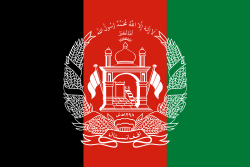British Tourist Claims 'Extreme' Holiday in Taliban-Controlled Afghanistan
 Afghanistan
AfghanistanNew documents reveal that many Afghans evacuated by the US during the chaotic withdrawal in 2021 remain stranded in foreign camps across at least 36 countries, facing inadequate conditions and an uncertain resettlement process. These records, obtained from litigation against US government departments, highlight the plight of evacuees who have pending applications to enter the United States.
Many of these individuals are being held in facilities that resemble prisons, with deteriorating mental health and family separations reported. Advocates estimate that hundreds of Afghans are stuck in temporary sites in countries such as the UAE, Qatar, Kosovo, and Germany. As of April 2023, thousands of Afghans were accounted for in these locations, with limited access to legal assistance and ongoing fears of forcible repatriation.
Efforts by the US government to resettle Afghan evacuees began in 2021 and continue today. However, many applicants have faced significant delays, with reports indicating a mere 0.3% approval rate for urgent humanitarian parole applications between 2020 and 2022. The US State Department recognizes that over 190,000 Afghans have been resettled since the evacuation, but numerous others still wait in limbo.
Human rights advocates have raised alarm over conditions at these "lily pad" sites, where Afghans face restrictions on movement, lack of medical care, and inadequate living conditions. Some formerly active military and governmental personnel have called for reforms in the resettlement process to better address the needs and rights of Afghan evacuees.
 Afghanistan
Afghanistan Afghanistan
Afghanistan Afghanistan
Afghanistan